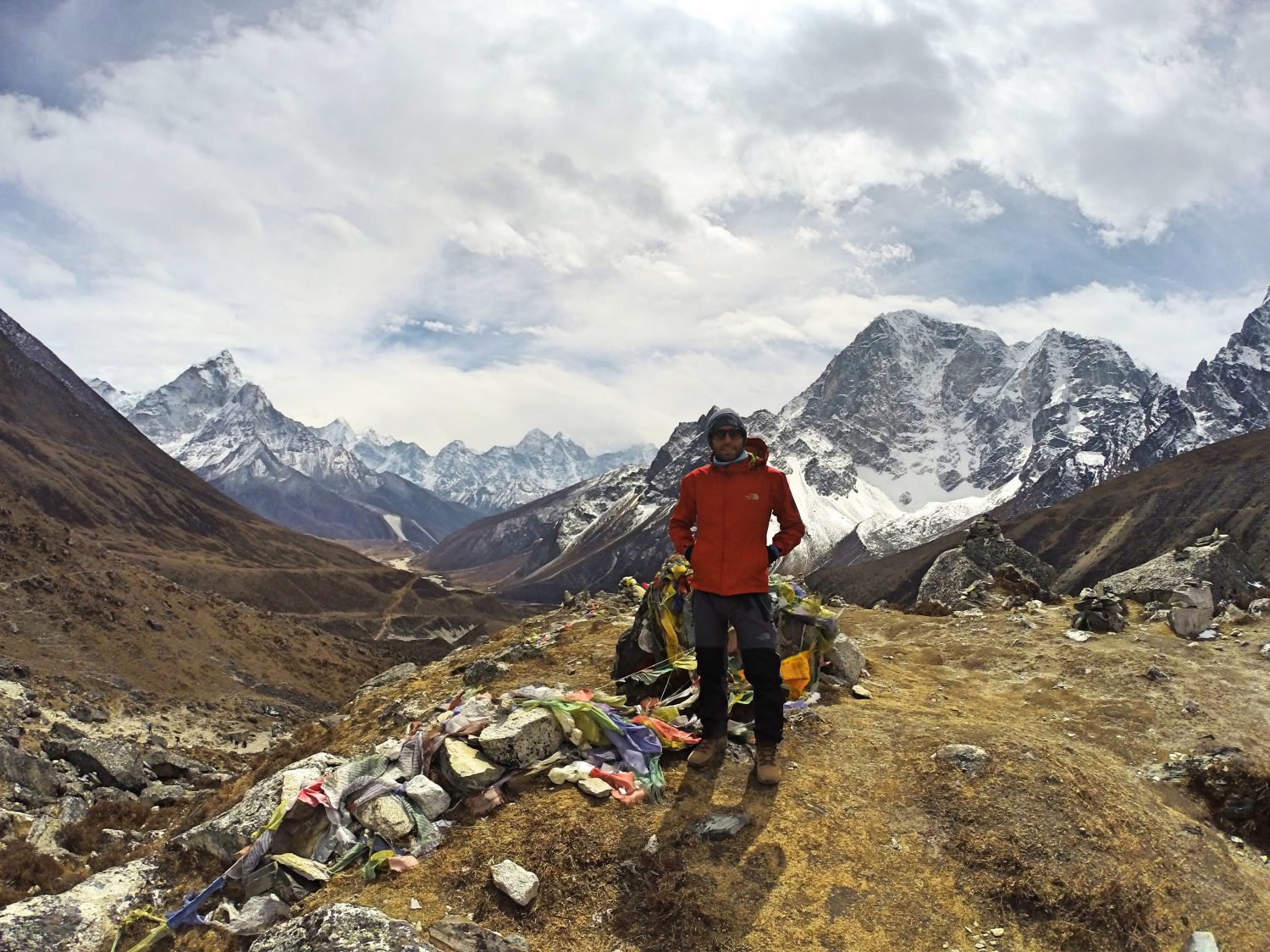Everest Base Camp Trekking Guide
Have to say that it’s one of the best experiences in my backpacking life. Since I discovered it was possible to reach Base Camp as a common tourist, I put it on my bucket list. From a couple of years ago, I’ve been fascinated with everything that surrounds Everest. Feeling that I could be part of that history was my greatest motivation. All the documentaries I saw and all the books I read came to life with every step I took in this amazing journey.
Everest Base Camp trekking consist on a trail that connect small villages in the valley of Khumbu all the way up to Base Camp. You can start your trek from Salleri with a previous 14 hour ride in jeep from Kathmandu or you can start from Lukla once you arrived from a 25 minute flight from Kathmandu. Most tourist start their way up the mountain by this second option. All the way up to Namche Bazaar that it’s the biggest village in the valley you only got one track but from that point you can diverge into two tracks that will merge in Dughla. The most popular route and short one to get to Base Camp is keep walking North-East towards Thyangboche. If you have time and are in good shape you should take the North-West route and make it through Gokyo and Chola Pass. If you are not in a tour, you can plan and decide however you want your trek.
Consider that even if the weather is good, it can be quite cold
From April to May it’s the best time to visit since it’s not that cold and the views are more clear. You will have more chances to see the peak and it’s still not high season so prices are better and still not that many tourist. I did the trekking on March and weather was good but obviously a little colder.
The monsoon hits hard on June and extends until August so the next good period to visit is from September to November. During this months you have a window between the heavy rain period and winter. You have to consider that during Autumn you will find much more climbers than in Spring.
How much time does it take?
Agency tours last 15 days considering spending one day at Kathmandu before flying to Lukla and one day once you get back.
Regular itinerary is like this:
Day 1: Kathmandu (spend the day at the city)
Day 2: Kathmandu/Phakding (fly to Lukla and trek to Phakding)
Day 3: Phakding/Namche Bazaar (spend two nights in Namche Bazaar acclimatising for the trek)
Day 4: Namche Bazaar (acclimatation day. Trek to Khumjung)
Day 5: Namche Bazaar/Thyangboche (trek through Rhododendron forest)
Day 6: Thyanboche/Dingboche (trek to dingboche to acclimatize)
Day 7: Dingboche (acclimatisation day. Opt to hike to chhukung or Nagarzhang peak)
Day 8: Dingboche/Lobuche (hike along the Khumbu Glacier)
Day 9: Lobuche/Gorak Shep (reach Everest Base Camp)
Day 10: Gorak Shep/Pheriche (early morning ascend to Kala Pattar for su rise view of Everest)
Day 11: Pheriche/Thyangboche (descend through Pangboche)
Day 12: Thyangboche/Monjo (stay in small village of Monjo)
Day 13: Monjo/Lukla (last day of trekking)
Day 14: Lukla/Kathmandu (fly back to Kathmandu)
Day 15: Kathmandu (leave at any time)
I spent 11 nights since flying to Lukla and flying back to Kathmandu. You should consider this is the minimun amount of time you will need if you want to reach base camp
My Itinerary:














